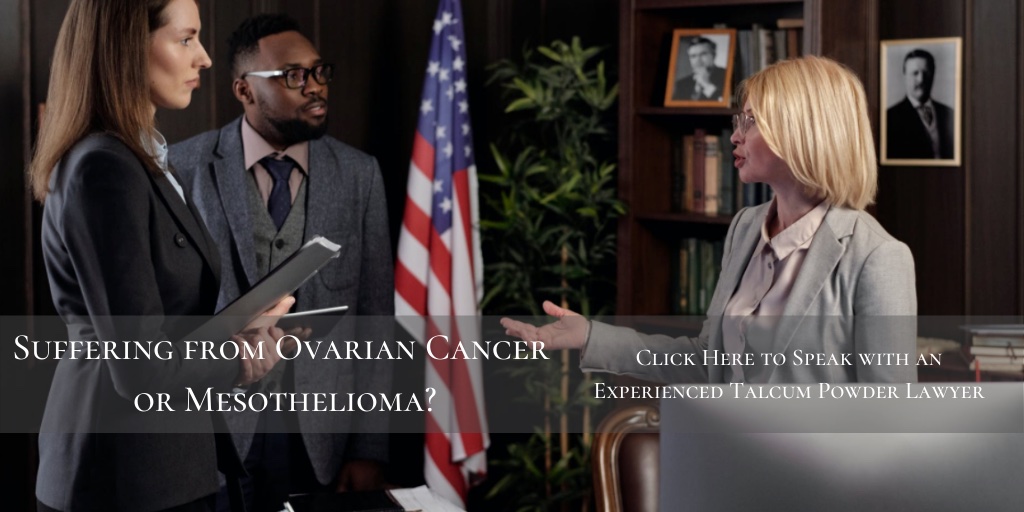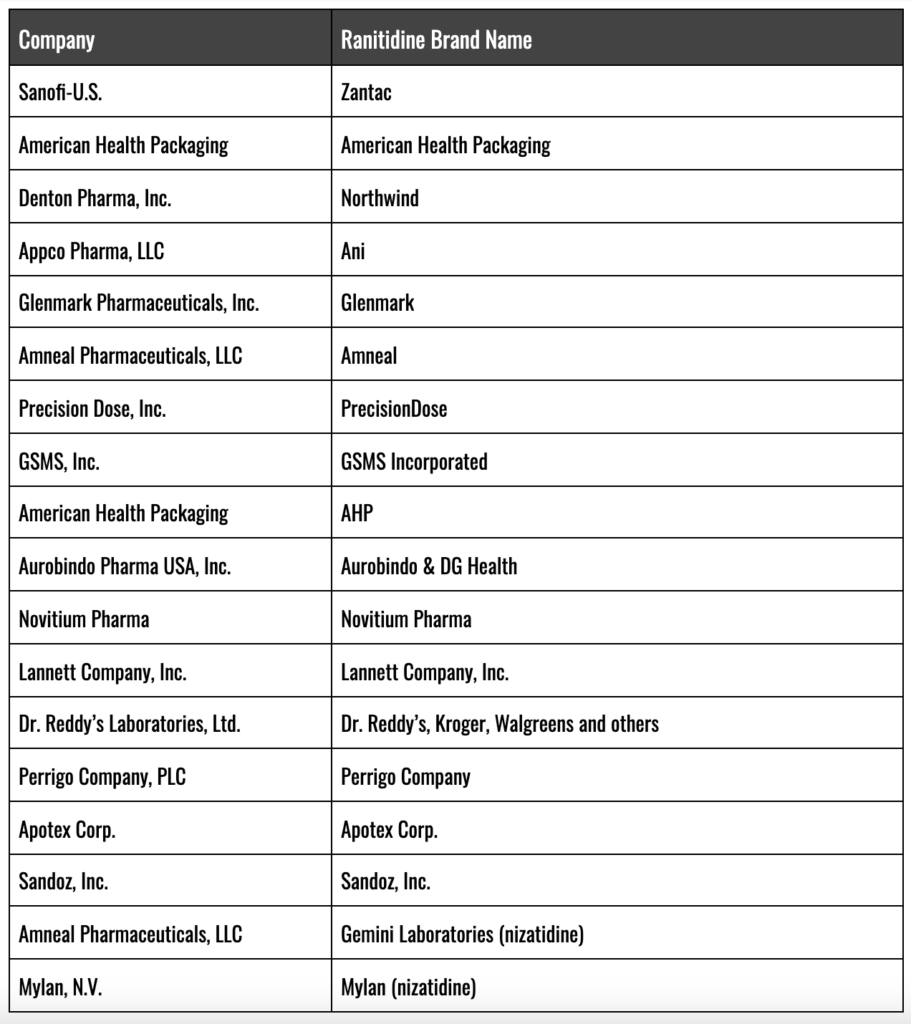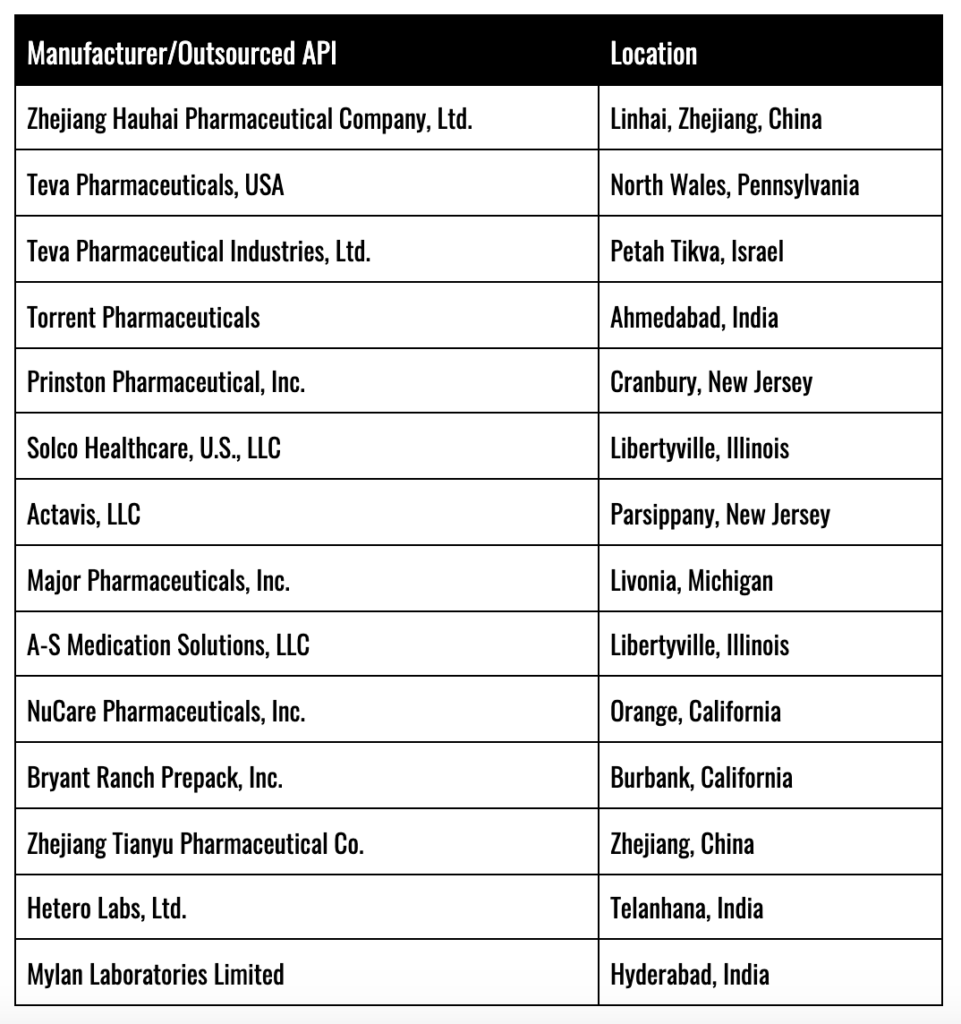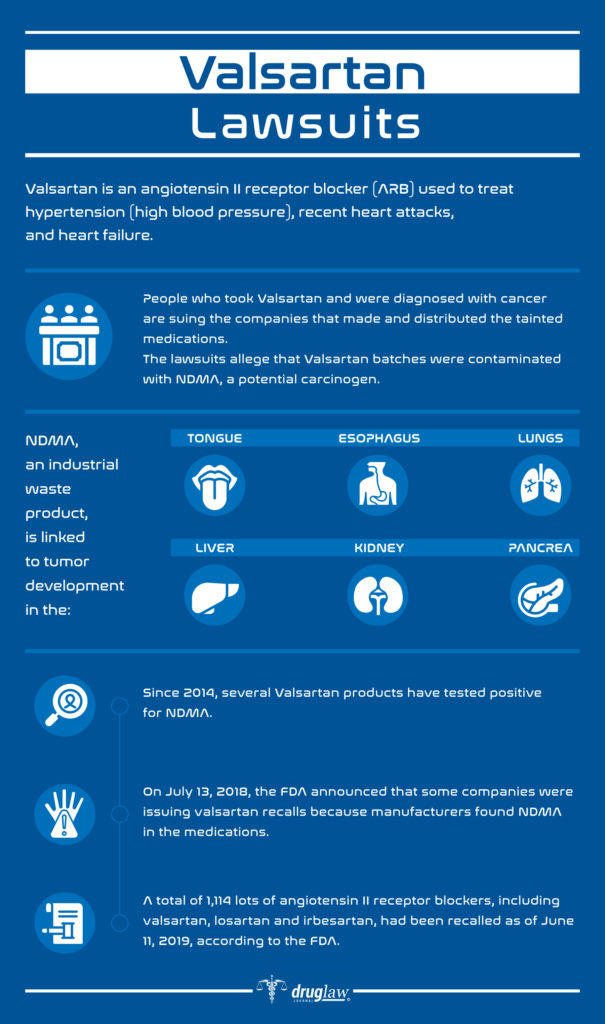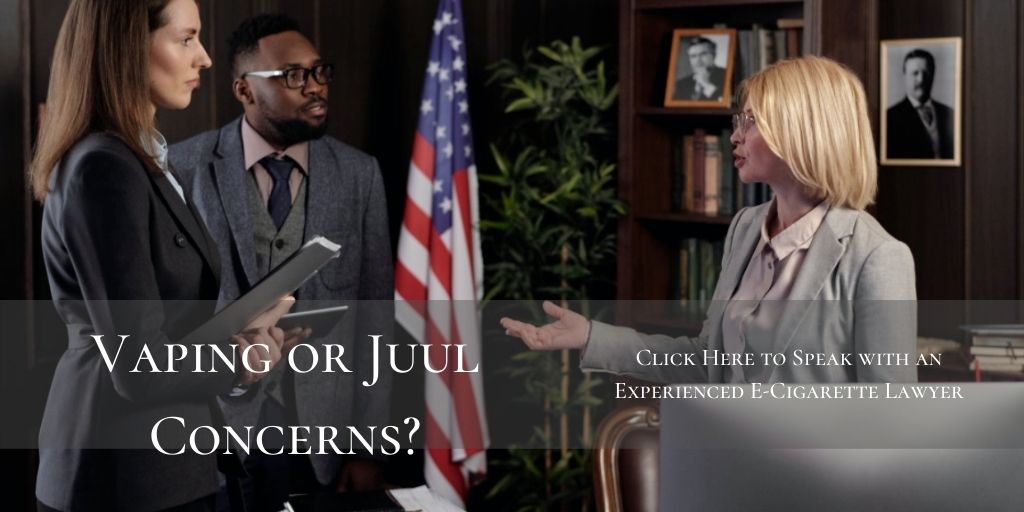Last Updated December 10, 2020
Talc is a naturally occurring mineral that appears at first to be grey/green or white with an oily or “greasy” feel to it. Once it has been crushed, dried, and milled, however – talc becomes a soft white powder that readily absorbs moisture. It is this quality that has made talc a staple in American medicine chests and bathrooms for decades in the form of baby powder or after showering powders to combat perspiration.
The uses for talc don’t stop with body powders though. Its absorbent propensity makes it ideal for other use in consumer products such as cosmetics, where it has been adopted in the processes for manufacturing a long list of popular brands with everyday applications. Additionally, talc may even be used in some food items such as rice, chewing gum, and pill tablets.
For years, cosmetic manufacturers and other product developers have understood that talc is frequently mined in close proximity with asbestos, a potent known carcinogen that when inhaled can cause lung cancer and/or mesothelioma. Additionally, it is widely suspected that asbestos-contaminated talc is linked with incidences of ovarian cancer as well as some other illnesses when applied to female genitalia.
Since 1976, the Cosmetic, Toiletry and Fragrances Association (now known as the “Personal Care Products Council”) has promoted a voluntary standard among its members requiring that their talc products be free of “detectable amounts” of asbestos. Unfortunately, the “detectable” standard is at odds with what many researchers consider safe. They believe that there are no safe levels of asbestos exposure – detectable or not.
What Cosmetic Products Typically Contain Talc?
Cosmetic manufacturers frequently use talc in their products because of its absorbency, caking prevention and improvements in consistency. It typically appears in setting powder, eye shadow, liquid foundation or anything which absorbs oil on the skin surface. Some of the other more common cosmetic categories featuring talc include:
- Foundation
- Bronzer/Highlighter
- Lipstick
- Blush
- Eye Liner
- Concealer
- Brow Liner
- Makeup Primer
- Antiperspirant/Deodorant
- Mascara
- Lip Liner
- Lip Balm
- Glitter
- Facial Cleanser
- Exfoliant Scrub
- Lip Gloss
Have Cosmetic Products Been Recalled for Asbestos Concerns?
In 2019, the U.S. Food and Drug Administration (FDA) issued alerts and warnings concerning at least two popular cosmetic brands and some of their product lines. First, in March 2019, the FDA advised consumers to not use some products by Claire’s because of suspected asbestos contamination. Specifically, the FDA referenced the following lots of products:
- Claire’s Eye Shadows – Batch No/Lot No: 08/17
- Claire’s Compact Powder – Batch No/Lot No: 07/15
- Claire’s Contour Palette – Batch No/Lot No: 04/17
In June 2019, Claire’s and another store, Beauty Plus, voluntarily recalled products due to additional testing which found suspected asbestos contamination. The recall involved:
- Beauty Plus Global Contour Effects Palette 2, Batch No. S1603002/PD-C1179
- Claire’s JoJo Siwa Makeup Set, SKU #888711136337, Batch/Lot No. S180109
These actions were followed in September 2019, with another FDA warning and voluntary recall on more product lines by Beauty Plus Global which tested positive for asbestos:
- Beauty Plus Global Inc. City Color Collection Matte Blush (Fuchsia), SKU #849136008807, Lot No. 1605020/PD-840
- Beauty Plus Global Inc. City Color Cosmetics Timeless Beauty Palette, SKU #849136012958, Lot No. 1510068/PD-C864R
- Beauty Plus Global Inc. City Color Bronzer (Sunset), SKU #849136016017, Lot No. 160634/PD-P712M
- Beauty Plus Global Inc. Beauty Plus Global Inc. City Color Shimmer Bronzer (Caramel), SKU #849136017106, Lot No. 1612112/PD-840
The FDA advised consumers not to use any of these products.
Does Talc in Makeup Cause Cancer or Have Other Side Effects?
Going back to the 1960s, it has been understood that, even at low levels, asbestos is a potent carcinogen and the cause of lung cancer and mesothelioma. Since that time, the cosmetic industry has gone to great lengths to claim that products that contain talc have “non-detectable” levels of asbestos in them. The term “non-detectable” is a careful choice of words on the industry’s part. With that in mind, a multitude of studies has failed to draw a direct linkage between ordinary “non-detectable” or “asbestos-free” talc-containing products and lung cancer.
Ovarian Cancer
Physicians, consumer advocates, industry representatives, and patients have been aware of a suspected linkage between the sprinkling of talc on female genitalia (“perineal dusting”) and higher rates of ovarian cancer for decades. They also have vehemently different opinions about its existence. Despite the disagreement between these groups as to whether genital talc exposure causes ovarian cancer, a growing body of evidence increasingly suggests a possible connection.
As a predicate, it is important to note that statistically, the rate of ovarian cancer in the general population is around 1%, which is substantially lower than the rate for breast cancer. However, a series of research studies involving large groups of women who have used talcum powder has uncovered that these women are about 30% more likely to be diagnosed with ovarian cancer. Naturally, the world’s largest manufacturer of talc powder, Johnson & Johnson, vehemently disputes these findings and to this day insists that its products are safe.
Alternatives to Talc in Cosmetics
The bottom line for consumers who are leery of the risks posed by talc in cosmetics is that they must pay close attention to labels and the business practices of the brands they shop. Specifically, consumers should look for the following on labels: talc; talcum powder; and/or magnesium silicate.
The good news is that there are a wide variety of cosmetic brands that manufacture products that do not feature talc or talc-derived ingredients. For instance, some baby powder brands have switched from talc to corn starch. Additionally, organizations such as the Campaign for Safe Cosmetics have taken the lead in consolidating timely information about which products contain talc and where to look for alternatives.
Is the FDA Investigating Talc in Cosmetics?
In February 2020, the FDA opened a public docket to discuss and collect scientific data on talc ingredients in cosmetics. The FDA and members of an interagency working group continue to work together to evaluate the science surrounding talc, asbestos contamination, and cosmetics. The immediate goal of the group is to potentially develop recommendations for testing of asbestos in talc.
Sources Cited (26):
1) “Talc in cosmetics and consumer products” https://www.mass.gov/info-details/talc-in-cosmetics-and-consumer-products
2) “EWG Skin Deep” https://www.ewg.org/skindeep/ingredients/706427-talc/
3) “Not worth the risk: It’s time to get talc out of all cosmetics, not just baby powder” https://uspirg.org/blogs/blog/usp/not-worth-risk-its-time-get-talc-out-all-cosmetics-not-just-baby-powder
4) “U.S. government experts, industry spar over asbestos testing in talc” https://www.reuters.com/article/us-health-fda-talc/u-s-government-experts-industry-spar-over-asbestos-testing-in-talc-idUSKBN1ZY0IX
5) “Uncovered: Inside The Talc Controversy” https://www.roseinc.com/blogs/content/uncovered-inside-the-talc-controversy
6) “FDA Advises Consumers to Stop Using Certain Cosmetic Products” https://www.fda.gov/cosmetics/cosmetics-recalls-alerts/fda-advises-consumers-stop-using-certain-cosmetic-products#:~:text=On%20September%206%2C%202019%20Beauty,Beauty%20Plus%20Global%20Inc.&text=City%20Color%20Cosmetics%20Timeless%20Beauty,SKU%20%23849136012958%2C%20Lot%20No.
7) “FDA Finds Asbestos in Beauty Plus Products, Issues Voluntary Recall” https://www.ewg.org/release/fda-finds-asbestos-beauty-plus-products-issues-voluntary-recall
8) “Campaign for Safe Cosmetics” http://www.safecosmetics.org/
9) “Talc” https://www.fda.gov/cosmetics/cosmetic-ingredients/talc
10) “Asbestos in commercial cosmetic talcum powder as a cause of mesothelioma in women” https://www.ncbi.nlm.nih.gov/pmc/articles/PMC4164883/
11) “Talcum Powder and Cancer” https://www.cancer.org/cancer/cancer-causes/talcum-powder-and-cancer.html
12) “What Is Talc, Where Is It Used and Why Is Asbestos a Concern?” https://www.nytimes.com/2018/12/14/business/talc-asbestos-powder-facts.html
13) “Asbestos and Talcum Powder: A History of Industry Pushback” https://sum.cuny.edu/asbestos-talcum-history/
14) “Talc, Asbestos, and Epidemiology: Corporate Influence and Scientific Incognizance” https://www.ncbi.nlm.nih.gov/pmc/articles/PMC6784763/
15) “Mesothelioma Associated With the Use of Cosmetic Talc” https://pubmed.ncbi.nlm.nih.gov/31609780/
16) “Talc: The Softest Mineral” https://geology.com/minerals/talc.shtml#:~:text=Talc%20is%20a%20mineral%20that,silica%20reacted%20with%20dolomiticmarbles.
17) “FDA urged to regulate talc because of cancer concerns” https://chemicalwatch.com/2745/fda-urged-to-regulate-talc-because-of-cancer-concerns
18) “JAMA Study Finds No Significant Link Between Talc Powder, Ovarian Cancer” https://www.ajmc.com/view/jama-study-finds-no-link-between-talc-powder-ovarian-cancer
19) “IARC Monographs on the Evaluation of Carcinogenic Risks to Humans” https://monographs.iarc.fr/wp-content/uploads/2018/06/mono93.pdf
20) “Health Canada: Learn about talc and if it’s safe.” https://www.canada.ca/en/health-canada/services/chemicals-product-safety/talc.html
21) “Safety Data Sheet” https://www.gusmerenterprises.com/wp-content/uploads/2015/12/Talc-SDS.pdf
22) “FDA In Brief: FDA Releases Final Report of Talc-containing Cosmetic Products Tested for Asbestos” https://www.fda.gov/news-events/fda-brief/fda-brief-fda-releases-final-report-talc-containing-cosmetic-products-tested-asbestos
23) “Toxicology and Carcinogenesis: Studies of Talc” https://ntp.niehs.nih.gov/ntp/htdocs/lt_rpts/tr421.pdf
24) ““Non Detected”: The Politics of Measurement of Asbestos in Talc, 1971–1976” https://www.ncbi.nlm.nih.gov/pmc/articles/PMC6603445/
25) “PRELIMINARY RECOMMENDATIONS ON TESTING METHODS FOR ASBESTOS
IN TALC AND CONSUMER PRODUCTS CONTAINING TALC” https://www.fda.gov/media/134005/download
26) “Safety Assessment of Talc as Used in Cosmetics” https://www.cir-safety.org/sites/default/files/talc032013rep.pdf

